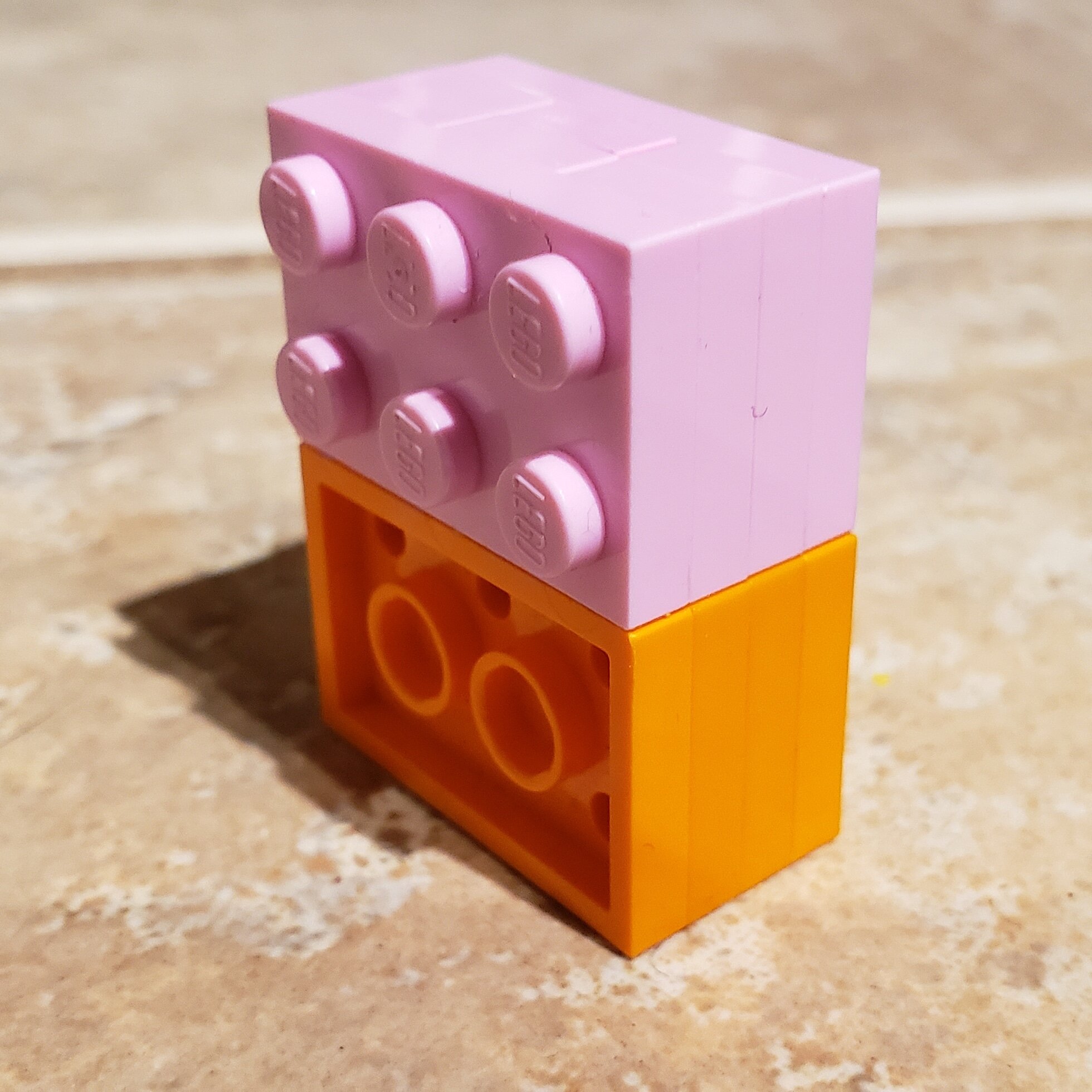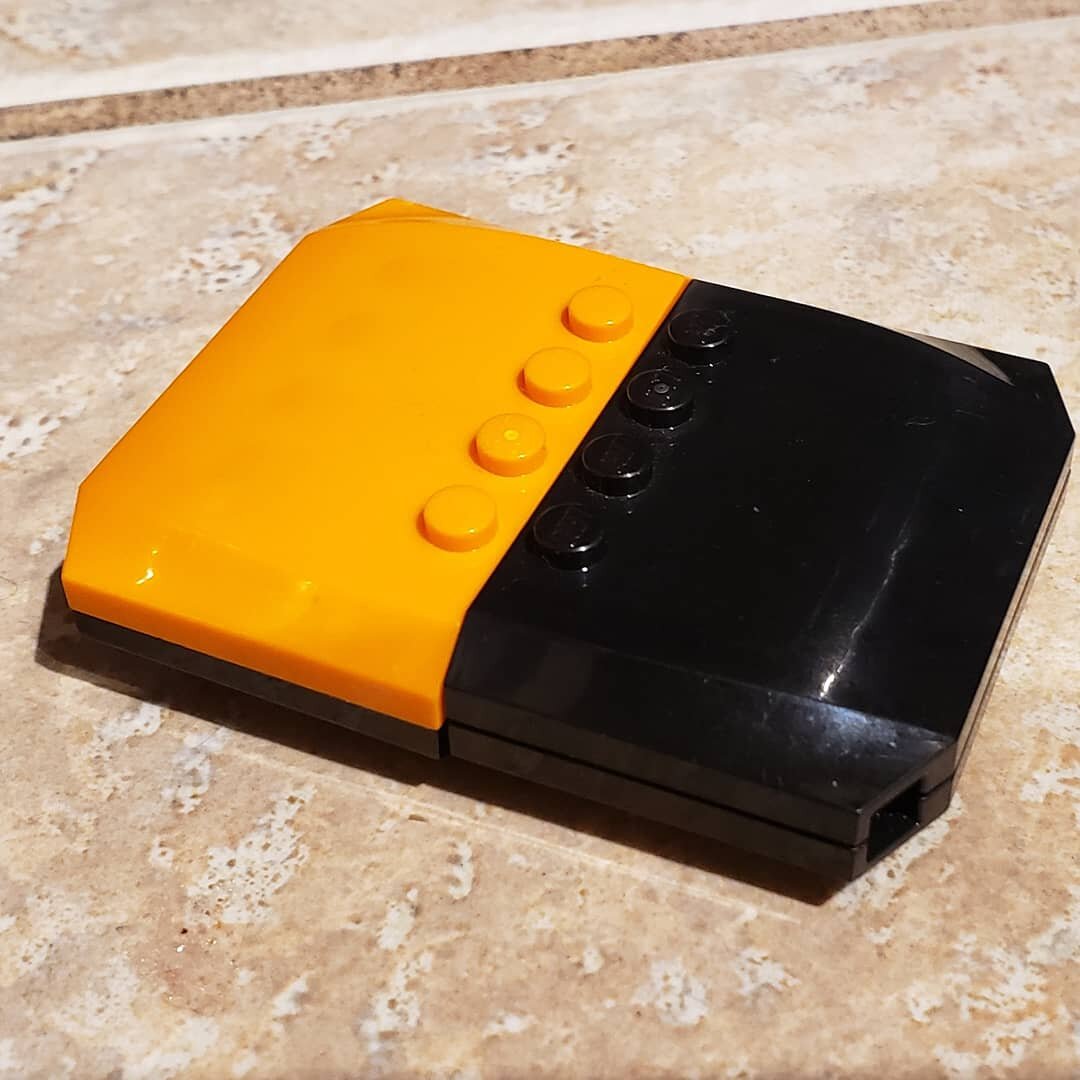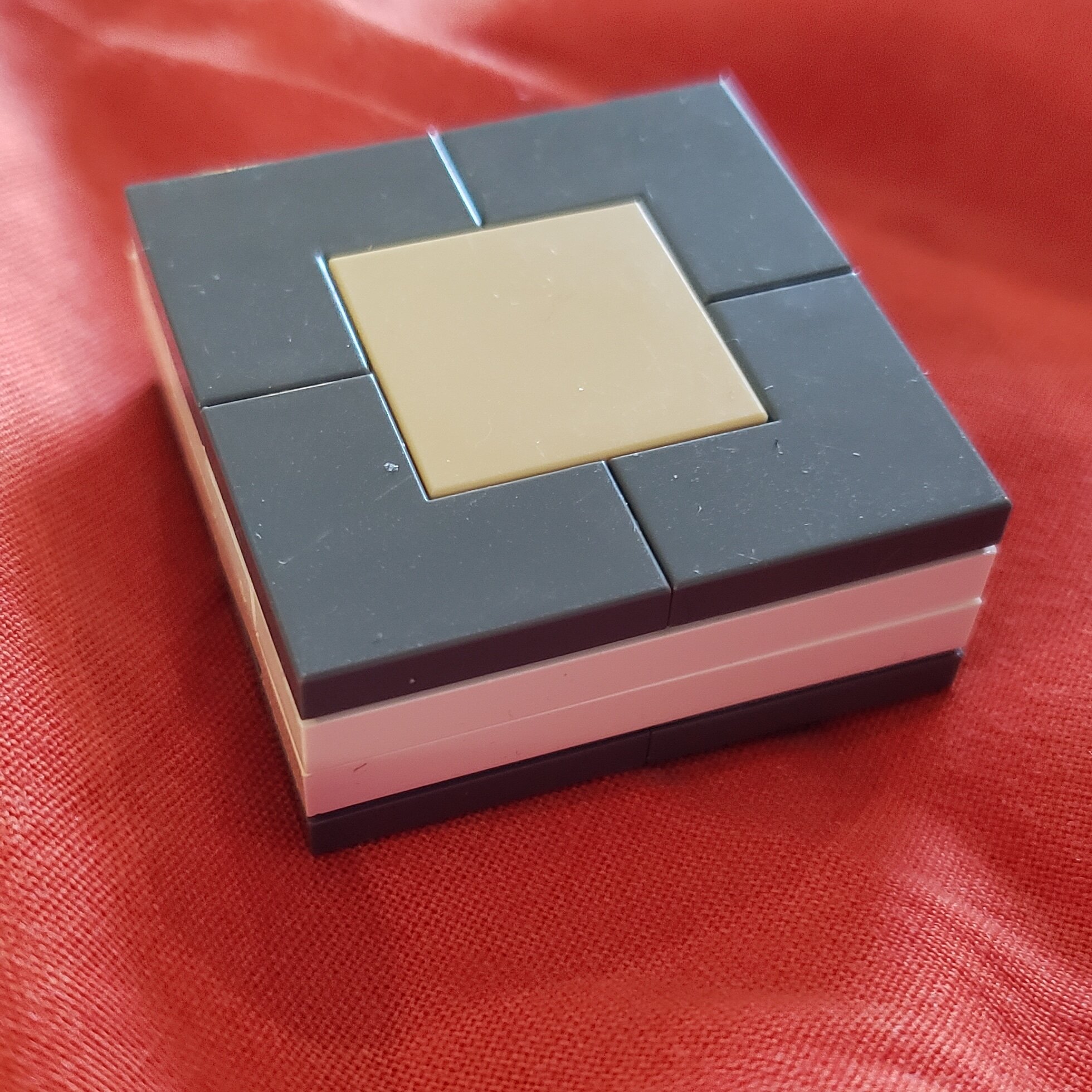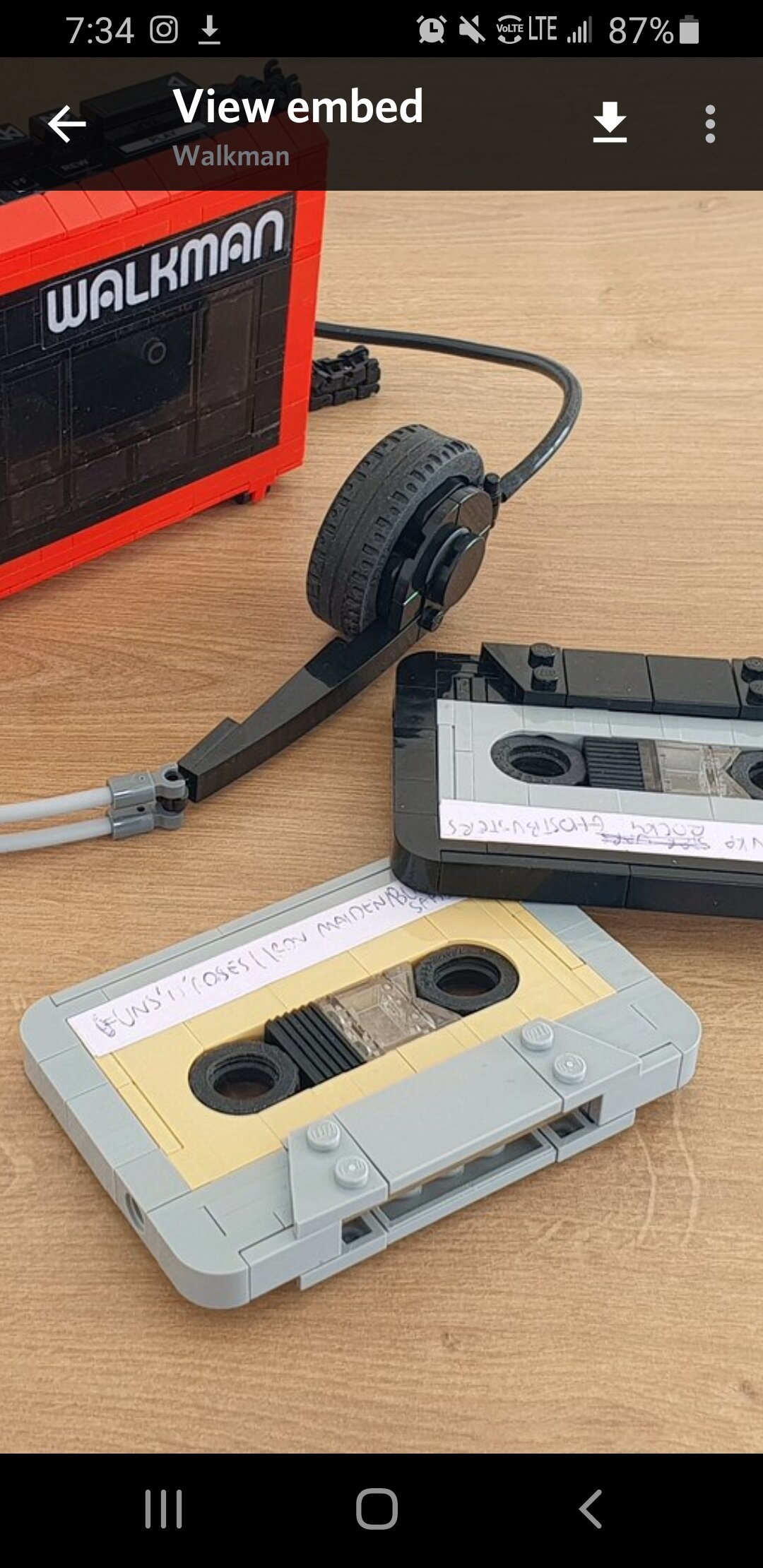Reverse Engineering MOCs: Building Your Way Through a Pandemic Without Instructions
/I used to MOC a lot. In the olden days.
I am, by trade, a professional parent, and while even under optimal conditions, that entails being on-call 24/7 with a Sisyphean list of tasks. I would usually carve out some LEGO time in the day when my people were all in school and the worst of the fires had been put out. I’d let my brain dive deep into the creative pool and build. At least, that's how it worked in the “before times.”
Minifig me at my minifig house. We’re here all the time.
Remember the before times? (If you’re having difficulties, check Facebook memories... uh... try at least two years back...)
In March 2020, our adventures, planning for adventures, extra-curricular, and daily chauffeuring were all immediately struck from the schedule. Silver lining: that freed up hours every day! But also all my people were now home all the time.
All. The. Time.
All. The. Time.
So, yeah, “Lots of extra hours in the day!” But most of that time is “short attention span theater.” Ask me how many times I’ve been brought up to code on Pokemon lore in the space of writing these paragraphs. (Or don’t. I've lost count.) Constant interruption is not so conducive to the creative process, especially to my kind of MOC building.
Early in the pandemic, I stumbled onto the Ryan Howerter #ReverseEngineeringChallenge on Instagram that helped to alleviate some of my angst. I may not be able to focus on creating, but the challenge allowed me to think about LEGO without the creative process. It presented a small, specific problem—an outline of how a shape was made out of LEGO without showing how it was achieved—that had at least one concrete solution. If I couldn’t MOC, at least I could learn new techniques!
Unfortunately, that didn't scratch the itch for long. Discovering the hidden treasures in the boxes was all well and good, but... I like to build pretty things!
I don’t remember how or when I started. I don’t think it was because of that piano thing, even though I reverse engineered dozens. But I noticed that I take a lot of screenshots of MOCs and MOC bits. Why not reverse engineer some of that instead?
AFOLs are asked all the time, “Did you make instructions for that?” Pshaw... Where we’re going, we don’t need instructions!
I've found reverse engineering MOCs to be a suitably enriching hobby that can be squeezed into the fits and bursts of quarantine time. If puzzle solving is your cup of tea, here are some tips to get you started.
Pick a MOC with a photo where you can zoom in
Some photographs are beautifully rendered to smooth out all evidence of being built with the brick. That will make your challenge more difficult. You probably don’t want to make it more difficult. It’s going to be harder than you think.
Your first thought might be, “But then you have all the answers! That’s not much of a challenge, then, is it?” Not so much.
A photo can hide more than it reveals. That MOC may look like it uses a 1x1 plate... but is it hiding a clip or something modified? Is that brick a SNOT? What kind? A half-plate can really throw a curveball. Seeing the outline is not a blueprint or instructions, but if you’re lucky it gives you enough to work from.
Pick something small
I am lucky to be in possession of a good amount of brick. I used to be “shocked” to encounter a basic-looking element that I don’t own. Not anymore! As George Harrison sang, “The more I learn, the less I know.” “The more I build, the less I have?” Well, kinda... I mean, it’s all good... but trust me: you want to pick something small.
Some builders will share photos of their deconstructed MOCs or a parts list. This makes things infinitely easier—don’t be afraid to use those! But it’s still not necessarily easy.
One way or another, once you’ve figured out the hundred bits and realized that you only have ninety-five... what then? Well, that’s where the fun begins. For sure, I’ve “given up” on plenty of photos before I even started. Frustration is in the recipe. You gotta know when to cut your losses. But there are other solutions.
Color swap!
Depending on how organized you are, this may be easier said than done. (I’m fairly organized. In my own way.)
Once I’ve determined that I have 95/100 bits, before calling it quits first I ponder: is that a color that can be swapped? Will that require other parts of the MOC to be color swapped as well? The answer isn’t as simple as having those five parts in another color. You have to take into account how it fits into the whole. But sometimes it can be done! For example, I wanted to reverse engineer this cassette by Jerak. I didn’t have enough of the elements in grey or tan. It still worked in brown though.
Is it real, or is it Memorex?
BrickLink
Did you know that it’s possible to go to BrickLink and not buy a thing? No, seriously! You can go there just for information. When you think you don’t have a necessary element, check BrickLink to see what sets it has been used in. Maybe you have a piece you need in a set on display and it can be swapped out temporarily. Maybe it’s uncommon and you just need to make do with something else.
Sometimes, you’ll even encounter a render that employs a color that doesn’t exist in real life! Any which way, BrickLink can help you learn something about when elements and colors went in and out of fashion, and that’s fun, too.
Item appears in 1096 sets.
Expand your expectations and social circle, and learn to cheat like the pros!
Reverse engineering other builders’ MOCs has brought home the fact that I am *not* a rule breaker! (Something about “setting an example.” Ugh. I know.)
Fortunately, reverse engineering has helped me to interact with more adventurous members of the AFOL community. Once I’ve built a recreation, I reach out to the original because “following rules” also means you “credit the creator.” I’ve found that builders I don’t know tend to be honored—or at least amused—to have had their work decrypted. They’ve all been very helpful.
Several times, I’ve shared my reverse-engineered copy with the original builder after spending way too much time finding a solution, only for them to tell me something like, “Heh—yeah, I just glued that. Glue? Curses! What about “rules?” That’ll teach me to not be such a square.
In addition, as someone who builds exclusively for display in real life, reverse engineering has taught me to appreciate the online tool of photographic trickery.
For example, I spent hours figuring how to get the hair to work on this amazingly awesome Mozart by @paulvillemocs, only to learn that the original model was built to be seen from one side. Facepalm. I can hear Amadeus’ laugh. Hahahahaha!
Well, after all that extra work, it will look great from all angles, sitting on the MOC of my piano. #glasshalffull
And as someone who focuses on durability for display, I’ve learned that many of these gorgeous MOCs are held together with a whisper and a prayer. Don’t breathe too hard! That handle stuck in there is barely legal, but the cops in that new police station modular won’t arrest you for using illegal techniques.
Actually, I tell that to my kids, too. You don’t always have to follow rules. “Question authority.” It’s their world we’re building. Hopefully, some of this honest trickery can rub off into my vocabulary when I start creating again.
Can you improve on the original?
So, what to do if you’ve determined that you’re absolutely short a piece or two? Do you have to scrap the whole endeavor? Maybe. But probably not. Have you ever taken a good look at all the SNOT bricks and hinges in your collection? And all the layers behind the surface on that MOC? There is more than one way to skin a cat! Don’t be afraid to try an alternate method (and cover it up).
Sometimes when I reverse engineer something, I feel confident enough to make a change at the end just because that bit makes me personally happier, but often I change it for a lack of parts. For example, I used the mushroom cap eye on this bird by Luis Pen~a (instructions available) because I don’t have the dish in plain red... but I kinda like it like that. I might not replace it.
Sometimes, a reverse-engineered MOC feels a little better with a modification. Sometimes, it feels like a poor man’s copy. You just have to know you tried your best. But if you learn something, it’s all good. You’ll be distracted in five minutes, after all.
At the very least, improvisation makes for a great game of “Spot the difference!” Here’s a boom box I copied from BrickNerd’s Andreas Lenander. How many differences can you find?
Ask for help!
We may feel isolated these days, but AFOLs are not alone.
Who wants to be a brick-millionaire? I have one friend to whom I refer as “my lifeline.” Reverse engineering does not come without a heavy dose of frustration, and once or twice I’ve been so lost that I had to send a screenshot with a cry for help. A few minutes later, I get a photo of the not-so-obvious answer… Of course. In a few minutes. Sigh.
I’ve also asked my fellow BrickNerds for advice when I’ve reached a dead end. Does it hurt my pride to admit/know/confront my weakness? Sure. You know what un-hurts more? Being shown that AFOLs are truly a supportive community and that there are friends out there who are willing to help. One day, maybe I’ll know enough to pay it back… or at least to pay it forward.
Oh—excuse me… Did I mention that I also have four very needy cats? (Here they are, reverse engineered in the style of Nobu_tary.) Don’t ask me how many times they’ve had to be let in and out in the course of writing this article. Again, I’ve lost count.
Reverse engineering is an endeavor that doesn’t involve creating from scratch. It’s much more easily squeezed into the starts and stops of a “high distraction lifestyle” like some of us have experienced this past year. If you have been facing a quarantine creative block, maybe these tips can help you, too.
Until we reverse engineer a better future on “the other side,” there are many ways we can continue to “leg godt.” Even without instructions.
Have you ever tried to reverse-engineer a MOC? Let us know in the comments below!
Do you want to help BrickNerd continue publishing articles like this one? Become a patron to show your support, get early access, exclusive swag and more.

































